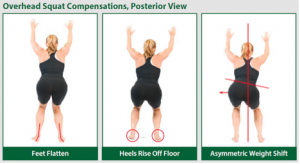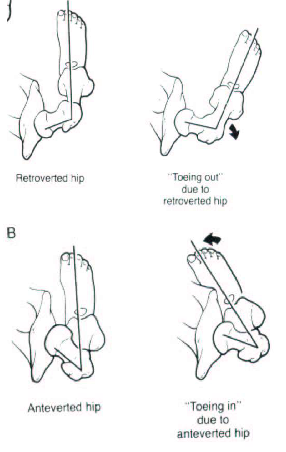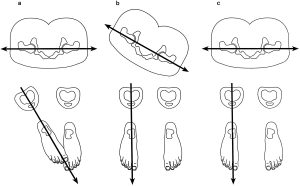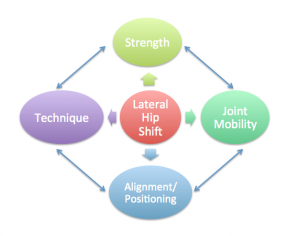Lateral Hip Shift During a Squat: What’s Going On and What to Do About It
It’s a common thing to see when someone is doing a squat workout: The walk out strong, they drop deep into the hole, and then on the way out, they wind up sticking their hips to the side in a motion path that would closely resemble a question mark. This question mark hip shift brings some questions of their own, specifically, why did that happen, is it something that is going to lead to an injury, and what can someone do to help correct or prevent it?

Image credit, brentbrookbush.com
This tends to happen in a couple of very distinct situations:
- All the time. Every time the person squats they wind up shifting their hips and they can’t help it
- Only when the weight they’re moving is above a certain number specific to the individual.
- When their technique isn’t addressed on some specific element, such as anteroposterior weight balance on their feet, lateral drive from the knees, core bracing and breathing, tension on the bar, or some other thing.
- They’re tired and it’s at the end of their X set of their workout
Many squat cues and coaching videos will tend to give a specific solution that is intended to capture every one of these situations, however the reason why the hip shift happened in each case is entirely different, so one solution couldn’t possibly work for them all. They still bring a lot of value, but they have to be applied to the right situation.
Some of the research that has been done on hip shift has shown muscle activity and joint mechanics that contribute to the situation. In a hip shift, the side being shifted towards tends to exhibit less hip abduction and ankle dorsiflexion, and greater internal rotation. Because of this, the overlying theme for many of the corrections you will see promote improving motion through these segments. The approach is direct and linear, and if it’s a case where the muscles are in fact weak, or the joints are in fact limited, you’d find some excellent results from the approaches.
Juggernaut Strength and Quin Henoch do a fantastic job with this.
These approaches work very well in situations where the shift happens above a specific weight. If the loading is less than threshold, the muscle strength and joint mechanics may be able to cheat or get by with what they have available without shifting, but then 10 or 20 lbs above that level causes the shift without any change in position or technical alterations.
It can also be valuable if the joint kinematics are limited during the movement on every single rep, regardless of the load, and if motion at the joint is improved, you’re good to go.
One thing this doesn’t address is whether the shift is in response to an asymmetric structure that could be causing an altered length-tension relation between left and right hips, which would mean in order to push hard and move a weight vertical, the hip alignment would have to change its orientation to produce vertical power.
One thing to consider is relative motion of the femur in the socket that could be contributing to the hip shift. For instance, if you’re shifting your hips to your right and your right side pelvis winds up rotating forward, the right hip is moving into more external rotation. This may orient the femur in a more advantageous position compared to being more internally rotated, which is why the movement comes out under heavier loading. If the acetabulum is more retroverted or laterally placed than on the left side, this asymmetry would become more apparent under maximal loading. In many situations, this could be “fixed” with a slightly more externally rotated foot on the side he’s shifting towards. It’s not to say that there could be strength or activation issues present, but it could be a thing where you simply change alignment or positioning and it makes a big difference.


I’ve written about hip structural asymmetry a bunch of times, so do some back end research in those if you want, and because of this asymmetry, your motion during a bilateral movement may be altered, especially if you put an asymmetric structure into a symmetric stance.
So because the hips moving towards one side puts the femoroacetabular joint into more external rotation than in a vertical position, I’ve played with putting people who laterally shift into more of an externally rotated position on the side they shift towards, and it seems to be very successful, even up to sub max or near max loading.
The argument could be made that strengthening the muscles mentioned above could still benefit in this situation to help control lateral motion that could be looking to drive the hip into external rotation, or putting the hip into external rotation could help reduce the need for a positional alteration that would allow those muscles to function best.
So because of this interdependence, you can’t really address strength without addressing alignment, and you can’t simply change positioning without working on being strong in that new position. From all of that, you still have to understand the basic technique components of the movement so that you can crush the lift on a routine basis.

So if you have a lateral shift occurring with your squat, try adjusting your foot position to see if it can help reduce it (turn the toe out on the side you’re shifting towards). If that cleans things up very well, cool, but if not, you’re not out anything. From there, move on to working on the strengthening and corrective options to help build up hip external rotation strength, foot and ankle motion or alignment, or whatever else may need to be worked on. If those aren’t working, it could be a technique element you need to address, such as arch strength and lateral motion control of the foot during the movement.
If it’s only happening on your 6th set of 12, ask yourself what the hell you’re doing trying to hit up 12 sets of squats when your technique is failing at 6. Maybe you would be better off working with slightly less loading, fewer sets, and not letting yourself become a fatigue-beast in the gym always working out when dead tired. You might actually get stronger and recover more effectively.
5 Responses to Lateral Hip Shift During a Squat: What’s Going On and What to Do About It